How to Build a SaaS Application: 8-Step Guide to Develop a SaaS App
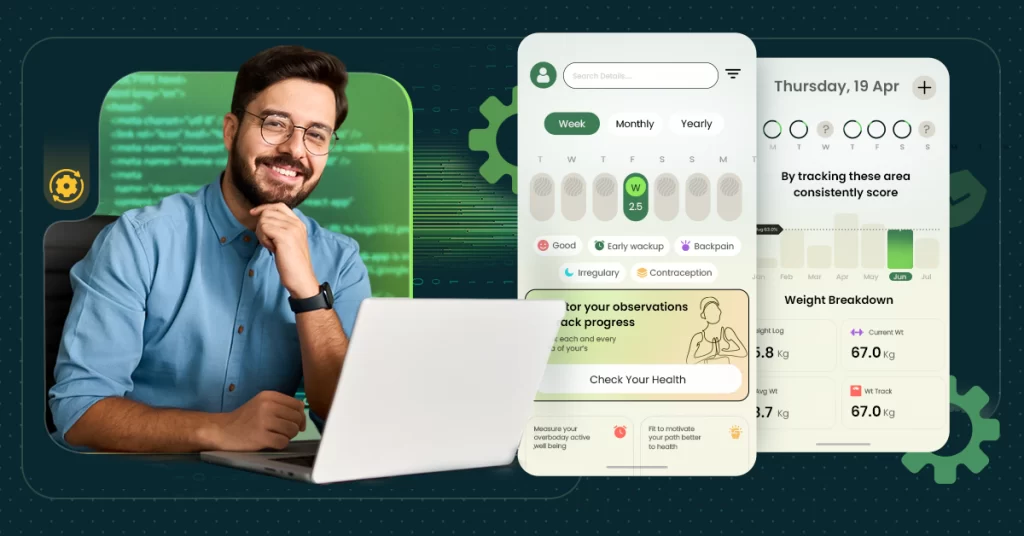
Ever dream of turning your software idea into something everyone can use? Picture a remarkably helpful app — continuously updated, available everywhere. This is the enchantment of SaaS (Software as a Service) applications!
Developing a SaaS application lets you build something awesome that makes life easier for businesses and people like you. Imagine creating software that helps them work faster, do more, and stay on top of things by streamlining workflows, automating tasks, and providing real-time insights.
That’s the power you hold in your hands! When you build a SaaS application.
A successful cloud-based software requires carefully validating your idea upfront and designing amazing user experiences. You have to plan out your technical architecture to be secure and scalable from day one.
This blog will guide you on how to create a saas application. We’ll break down the steps into easy chunks, from making sure your idea is a good one to launching your SaaS app to the world.
And also you got the answer for how to build a SaaS app for your project.
Ready to solve real problems and make a lasting difference with a groundbreaking SaaS application?
Let’s get started with the basic question!
Table of Contents
What is SaaS Application?
A SaaS (Software as a Service) application is a software program that is hosted and delivered entirely over the internet. If you’ve ever wondered how to design a SaaS application, the first step is recognizing that it’s delivered online rather than installed locally, accessible through a web browser or mobile app.
The software and all your data reside in the cloud on the provider’s servers. As a user, you essentially rent or subscribe to use the application and related services on a recurring basis.
Types of SaaS Applications
The SaaS model has revolutionized how businesses and individuals access and use software. Instead of installing programs on local machines, users can now access a variety of applications directly from the cloud.
These applications span various industries and functions, making them indispensable tools for modern businesses.
Let’s explore how to build SaaS products, their types, and their unique benefits.
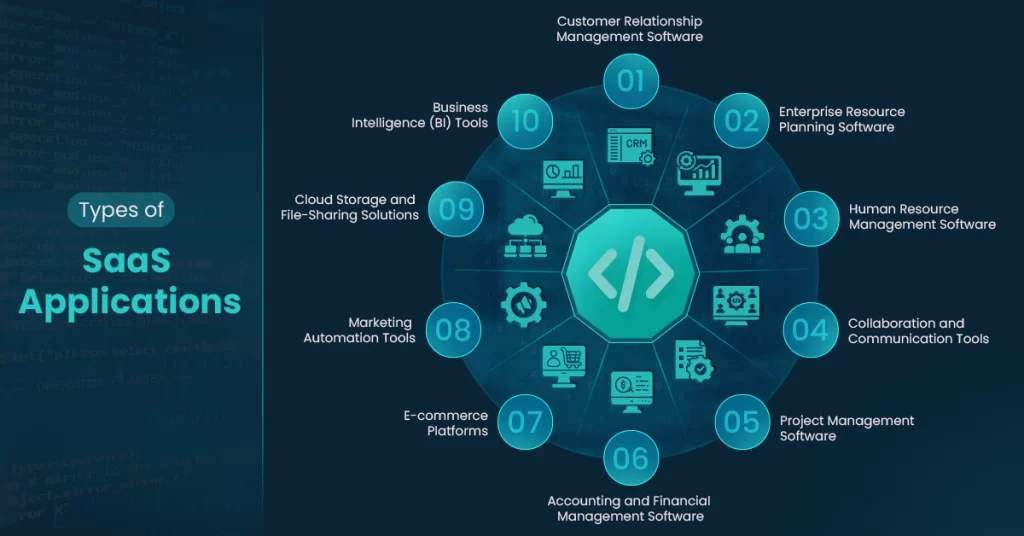
1️⃣ Customer Relationship Management Software
This tool help businesses manage their interactions with present and potential customers.
Platforms like Salesforce or HubSpot streamline sales, marketing, and service management.
By centralizing data, CRMs allow teams to collaborate effectively, track leads, and nurture customer relationships.
2️⃣ Enterprise Resource Planning Software
ERP applications integrate various business processes—such as finance, HR, procurement, and supply chain—into one unified system.
Examples like NetSuite and SAP provide real-time analytics and automation, helping companies streamline operations.
For instance, a manufacturer might use ERP software to track inventory levels, process orders, and manage financial accounts, all from one platform.
3️⃣ Human Resource Management Software
HRM tools like Workday and BambooHR simplify workforce management.
These SaaS applications assist with payroll, recruiting, performance reviews, and employee data management. For businesses looking to develop SaaS applications in the HR domain, these platforms highlight the power of automation and cloud delivery.
In today’s remote and hybrid work environments, HRM software helps businesses stay connected with employees, manage onboarding, and monitor compliance.
With automated processes and self-service portals, employees can access the information they need in real time, reducing administrative burdens.
4️⃣ Collaboration and Communication Tools
With the rise of remote work, collaboration platforms like Slack, Microsoft Teams, and Zoom have become indispensable.
These SaaS applications enable teams to communicate, share files, hold virtual meetings, and collaborate on projects from anywhere in the world.
They are built to foster teamwork, offering features like chat rooms, video conferencing, and integrations with other tools like Google Drive or Trello, ensuring seamless coordination across teams.
5️⃣ Project Management Software
Supervising projects across multiple teams can be a challenge, but SaaS-based project management tools like Asana, Monday.com, and Trello have made it much easier.
These platforms offer task tracking, time management, and collaboration features, enabling teams to stay on top of deadlines and budgets. That’s why many entrepreneurs are building a SaaS application to solve niche project management challenges in new industries.
6️⃣ Accounting and Financial Management Software
Gone are the days of spreadsheets and manual bookkeeping. SaaS accounting applications like QuickBooks, Xero, and FreshBooks help businesses manage their finances seamlessly, offering models that highlight how to build a SaaS application effectively.
These tools offer features such as invoicing, expense tracking, and financial reporting. They also integrate with banking systems, ensuring that businesses can track cash flow, generate reports, and stay compliant with tax regulations, all from one centralized platform.
7️⃣ E-commerce Platforms
For enterprises looking to sell products or services online, SaaS-based e-commerce solutions like Shopify, BigCommerce, and WooCommerce provide everything they need.
These platforms proffer customizable templates, payment gateways, inventory management, and marketing tools.
With the global e-commerce SaaS market estimated at US $10.77 billion in 2025 and projected to reach US $40.63 billion by 2034 (CAGR of 15.9%), learning how to create a SaaS platform that supports flexibility and omnichannel selling is becoming a strategic priority for tech-driven businesses.
8️⃣ Marketing Automation Tools
In high-tech setting, marketing automation is essential. SaaS applications like Marketo, Mailchimp, and Pardot help businesses automate email marketing, lead generation, social media campaigns, and more.
These tools provide insights into customer behavior, allowing businesses to tailor campaigns and engage their audience effectively. From segmentation to performance tracking, marketing automation SaaS solutions help businesses drive conversions.
9️⃣ Cloud Storage and File-Sharing Solutions
With the increasing need for secure data storage, cloud-based storage solutions like Google Drive, Dropbox, and OneDrive have become crucial for businesses.
These SaaS platforms allow users to store, share, and collaborate on documents in real-time.
In fact, 60% of business data is now stored in the cloud, highlighting why entrepreneurs aim to develop a SaaS product that is collaborative, secure, and accessible—rather than just basic storage.
Cloud storage is scalable, secure, and ensures that teams can access their data from any device, enhancing productivity and collaboration.
🔟 Business Intelligence (BI) Tools
For data-driven decision-making, BI tools like Tableau and Power BI offer powerful analytics and visualization features.
These SaaS platforms gather data from multiple sources, analyze it, and provide insights that help companies make informed decisions.
In fact, more than 80% of enterprises have increased their BI investments since the COVID-19 pandemic, which signals that anyone looking to create SaaS applications in today’s market must account for advanced analytics as a core expectation rather than an optional feature.
What Are The Benefits Of Building a SaaS Application?
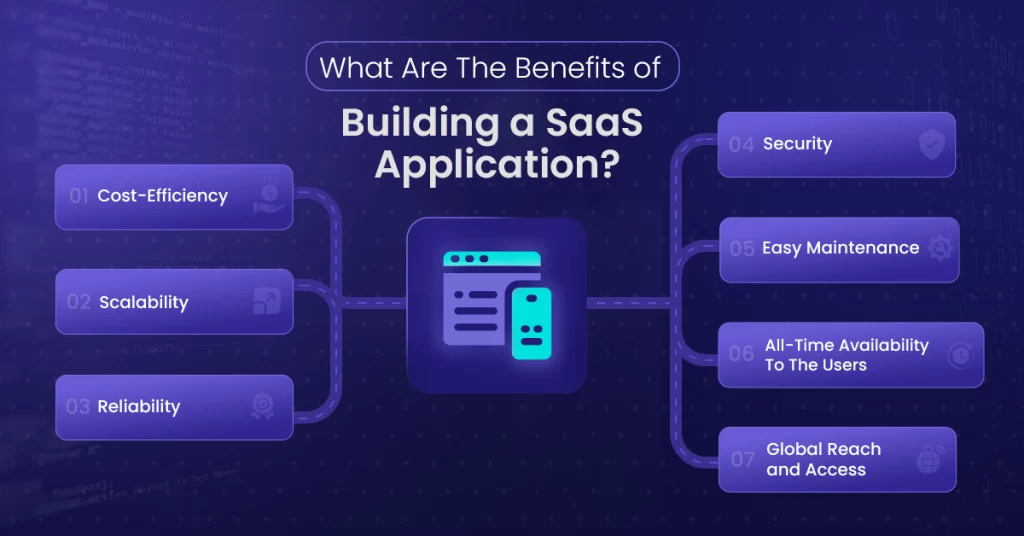
For creating a SaaS application there are numerous benefits in making it an attractive model for both developers and businesses. So, let’s go through each advantage of SaaS app for your business.
✅ Cost-Efficiency
- The cost of SaaS development eliminates the need for physical distribution, cutting expenses related to packaging and shipping.
- Providers avoid the costs of maintaining local server infrastructure, opting for scalable cloud solutions instead.
- Cloud computing allows for flexible resource allocation, ensuring providers only pay for what they use.
- Support costs are minimized by sharing infrastructure and support services among multiple users.
Notably, for many SaaS companies, cloud hosting makes up 6–12% of revenue—a substantial cost that must be managed efficiently, especially if you’re trying to create your own SaaS and keep margins healthy.
✅ Scalability
- As business grows and more users need access, it’s easy to scale up a SaaS application by adding more cloud resources.
- During peak demand times, SaaS can automatically spin up extra server capacity to handle the load.
- Scaling down is just as simple when usage dips, keeping your costs lean.
✅ Reliability
- SaaS providers invest heavily in redundant systems, failover mechanisms, and backups to ensure maximum uptime.
- Build SaaS application apps that run on battle-tested cloud infrastructure way more reliable than an average business could afford.
- Top SaaS vendors monitor their services 24/7 and have stringent SLAs around reliability.
True reliability is expensive: achieving just 99.9% uptime—the industry benchmark—still permits nearly 9 hours of downtime per year, making strategic infrastructure design critical when you’re exploring how to make a SaaS application with enterprise-grade availability.
✅ Security
- SaaS providers are true security experts – it’s mission-critical for their business to prioritize data protection.
- They employ teams of pros using the latest tools/practices to secure their multi-tenant cloud environments.
- Gaining certifications like SOC 2, ISO 27001, etc. proves their solid security posture.
✅ Easy Maintenance
- The vendor handles all updates, patches, and upgrades automatically behind the scenes for you.
- No hassles with testing new releases, compatibility issues across devices/OSes, etc.
- The SaaS app builder is always up-to-date with the latest features and fixes.
✅ All-Time Availability To The Users
- Develop SaaS applications in which clients can access the app anytime, anywhere over the internet – no schedules or limitations.
- Global users across multiple locations and time zones can be productive simultaneously.
- Leverage the mobility of cloud-based software on laptops, phones, and tablets – wherever work happens.
In fact, nearly 60% of the global workforce now works remotely at least part of the time, underscoring the necessity for entrepreneurs learning how to develop a saas that supports seamless, always-on access across devices and geographies.
✅ Global Reach and Access
- Develop SaaS applications that can be accessed globally through internet connectivity, eliminating geographical barriers.
- Users can access the software from any internet-enabled device with a web browser, enhancing accessibility.
- Providers can serve users across different regions without the need for localized infrastructure, expanding their reach.
- Global accessibility enables providers to implement diverse pricing models tailored to different regions or usage patterns.
How To Build Your Own SaaS Application in 7 Easy Steps?
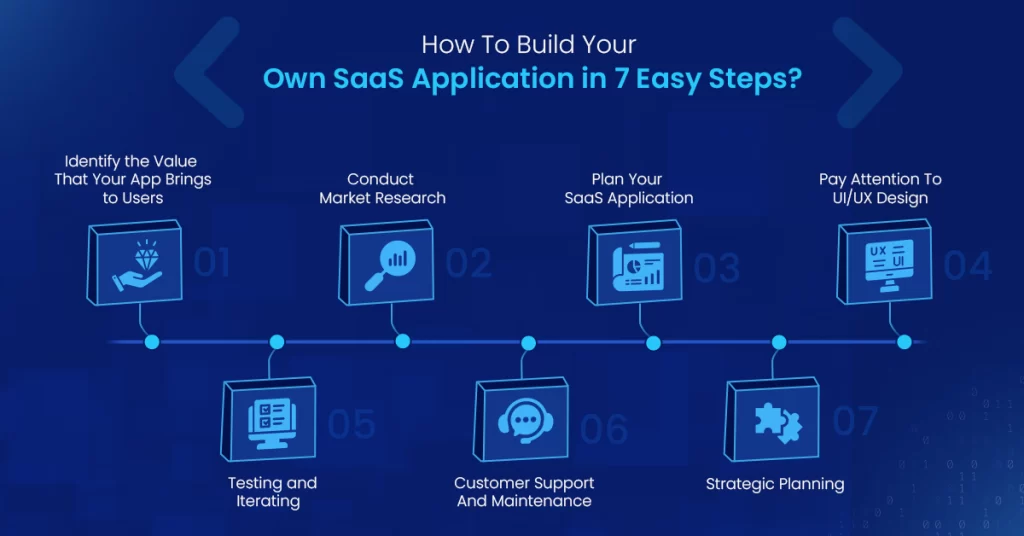
Now, let’s look at the step-by-step guide you should follow if you want to learn how to develop a SaaS application for your business.
Step 1: Identify the Value That Your App Brings to Users
The very first step of building a SaaS Application is to clearly and specifically define the value proposition and core benefits your SaaS application will deliver to users. You can’t skip this foundational piece. Conducting extensive user research through surveys, interviews, and other methods is critical to deeply understanding your audience’s needs, pain points, and desired outcomes.
- Identify the critical jobs to be done and develop a clear problem statement that your app will solve
- Differentiate your value proportionally from competitors by highlighting unique features, capabilities, or delivery models.
- Focus on your app’s most valuable and differentiated benefits – the key reasons users would adopt it.
Step 2: Conduct Market Research
Before investing heavily in development, you absolutely must validate that there is real, substantive demand for your SaaS concept in the market. Thoroughly analyzing the competitive landscape as well as substitute offerings or workarounds is essential.
- Estimate your total addressable market size based on key demographics, geographics, psychographics, etc.
- Gauge demand by putting up a landing page, running pre-order campaigns, crowdfunding, etc. to evaluate value proposition and pricing.
- Research competitor pricing models, sales cycles, marketing spend, go-to-market strategies, etc.
- Identify potential opportunities in underserved niches or blue ocean market spaces you could uniquely serve
In fact, 42% of startups fail due to a lack of market need, highlighting the critical importance of conducting thorough market research before proceeding with the technical aspects of how to make a saas application.
Step 3: Plan Your SaaS Application
With your value proposition validated and market demand confirmed, it’s time to plan out all the details of your application. Having a solid, comprehensive plan will keep your SaaS application development efforts focused and efficient.
- Creating a SaaS application that maps out user roles, permissions, workflows for all user types (admins, teams, clients, etc.)
- Prioritize a core feature set for an SaaS MVP Development and define the full product roadmap
- Design the technical architecture (hosting, languages, databases, integrations, etc.)
- Determine hosting approach (public cloud, private cloud, hybrid, etc.)
- Outline UI/UX specifications, branding guidelines, design systems, etc.
Step 4: Pay Attention To UI/UX Design
For Building SaaS application to be successful, the user experience (UX) must be an utmost priority. You have to invest heavily in UI/UX design from the start. Poor usability will completely undermine even the best features and value propositions.
- Invest in user research, persona development, info architecture, usability testing
- Create a SaaS application design with visually appealing yet intuitive interfaces focused on ease-of-use to the user.
- Develop consistent design patterns, components, and style guides across the product
- Implement responsive, mobile-friendly design for seamless cross-device experiences
- Focus on strong UX writing, micro-interactions, and delightful product behaviors
Step 5: Testing and Iterating
Don’t wait until launch to start testing for your SaaS application! Having a truly agile, iterative process with continual user validation and feedback loops is very important for SaaS products.
- Define test scenarios/cases to validate usability, functionality, accessibility, performance
- Leverage testing methods like A/B tests, user behavior analytics, session recordings, etc.
- Be open to major UX pivots based on insights from qualitative and quantitative testing
- Quickly adapt by rolling testing results into an updated roadmap for improvements
- After launch, double down on testing as you continue enhancing and expanding the app
Step 6: Customer Support And Maintenance
For a SaaS app, your responsibilities extend far beyond just the initial launch and development. Having robust plans for support and ongoing maintenance is essential.
- Create self-service resources like documentation, knowledge bases, tutorials, etc.
- Implement tools/processes for issue tracking, CRM, live chat, and staffing support teams
- Put incident response, business continuity, and disaster recovery plans in place
- Set up monitoring, logging, and error tracking to identify and address emerging issues
- Have processes to regularly release updates with new features, fixes, optimizations
Step 7: Strategic Planning
Since SaaS is fundamentally a strategic business model, you need comprehensive planning and strategies for multiple key areas:
Revenue Model And Pricing
- When you create SaaS application you can define your pricing strategy based on your wish. (freemium, per-user, usage-based, enterprise, etc.)
- If you want you can also offer pricing tiers, packages, and add-ons to cater to different segments to your clients.
- Plan pricing page designs that convey your offering’s value proposition
- Have streamlined procedure to evaluate pricing changes, grandfathering, promotions
Customer Retention
- Create a SaaS application that builds out customer success functions focused on adoption and renewal
- Have a clear understanding of tools for support, feedback, NPS surveys, customer marketing
- Guided onboarding processes tailored to different user personas
- Upsell, cross-sell, and expansion revenue opportunities
Product Roadmap
- When you create SaaS application you can create a roadmap that includes new features, add-ons, product line extensions
- Targeting new use cases, verticals, and geographical markets is one of the creative strategies when you build a SaaS application.
- Potential acquisitions, integrations, and partnerships for growth
Scalability and Security
When you develop SaaS application, you must start architecting your SaaS application to be secure, scalable, highly available, and enterprise-ready. This ensures you can reliably and compliantly handle growth When you build a SaaS application.
- Design for horizontal scalability using distributed systems, microservices, etc.
- Utilize cloud services for easy scaling, load balancing, built-in redundancy
- Follow security practices like encryption, access controls, API security, pen testing
- Ensure compliance with any relevant regulations (GDPR, HIPAA, PCI, etc.)
- Prioritize high availability through load balancing, failover, data backups/recovery
Now you have the answer for how to develop SaaS application.
Conclusion
Developing a successful SaaS application goes far beyond just building software. It requires validating your value proposition, designing an exceptional user experience, planning a comprehensive go-to-market strategy, and architecting for scalability and security.
Building the initial product is one piece; delivering true value through regular enhancements, top-notch support, and a strategic vision for growth is what sets winners apart.
The SaaS model allows for rapid innovation and building a global customer base quickly but also brings unique user experience, platform dependency, and security challenges.
Ultimately, it’s an ongoing journey requiring commitment to an agile, customer-centric mindset of continuous listening, validating, enhancing, and expanding.
If you have a great SaaS idea, make sure to follow the proper strategic roadmap to build your application with SaaS product development company.
With meticulous planning and execution, you can position yourself to bring a successful cloud-based solution to market.
FAQ’s
How to develop a saas application?
To develop a SaaS application, first identify the value your app brings and conduct market research. Plan the product using an MVP, focus on intuitive UI/UX, and perform rigorous testing. Ensure ongoing customer support, maintenance, and strategic planning for long-term growth and scalability.
How to build saas applications and solutions?
To build SaaS applications and solutions, start by identifying the value your product offers and validating it through market research. Plan with an MVP, design intuitive UI/UX, test thoroughly, and iterate. Ensure robust customer support, maintenance, and strategic planning for scalability and long-term success.
How to build a cloud-based saas application?
To build a cloud-based SaaS application, first identify the core value it provides and validate it through market research. Plan using an MVP, design user-friendly UI/UX, and leverage scalable cloud infrastructure. Test rigorously, iterate based on feedback, and ensure ongoing support, maintenance, and strategic growth planning.
Talk To Our Expert Team, Brief Your Requirements To Build Your Own SaaS Application, And Get Started In The Next Few Days. Contact Us Today to Create a High-performing SaaS App.
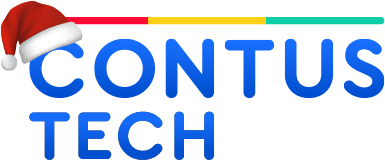

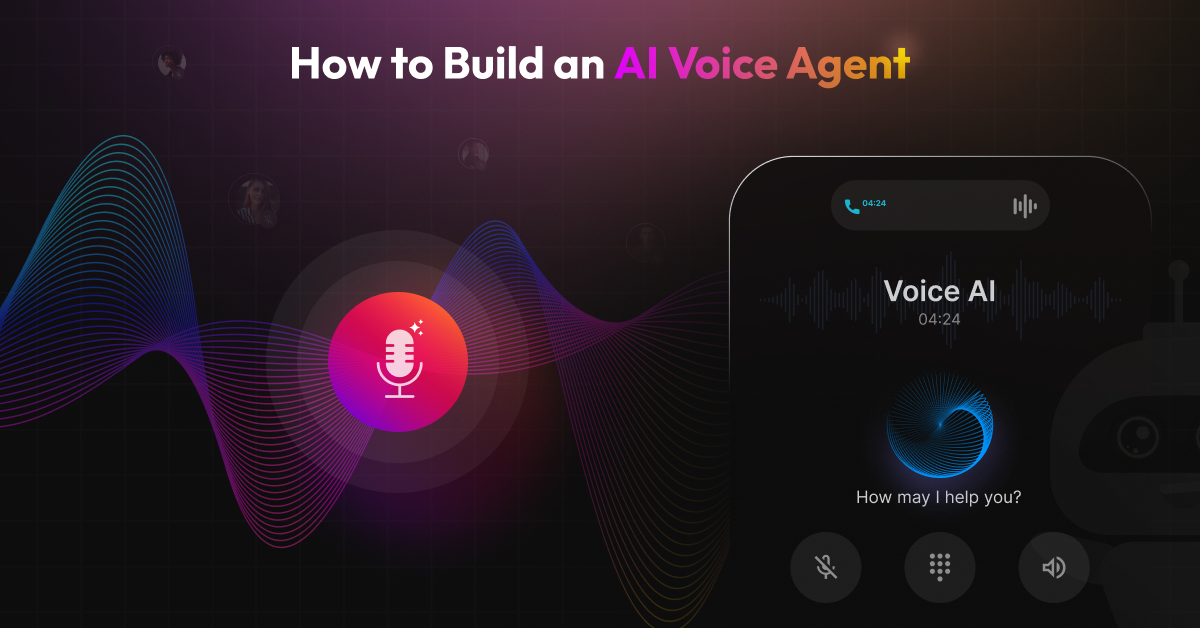

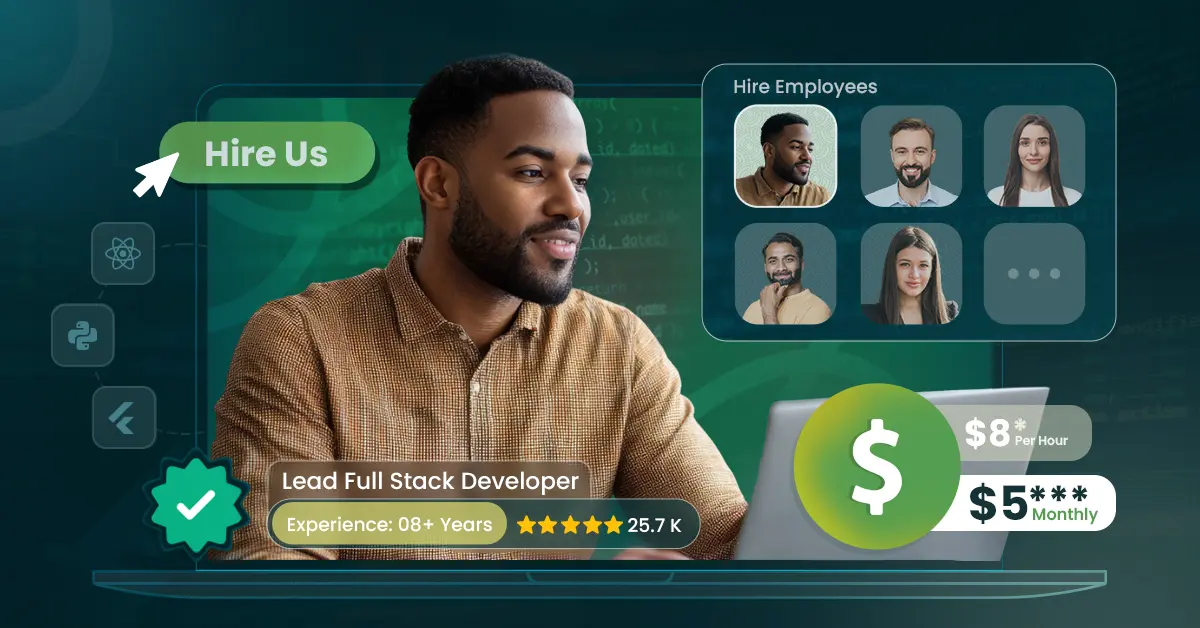
How can I manage customer support effectively for my SaaS application?
Set up self-service resources like FAQs and knowledge bases. Implement tools for issue tracking and live chat support. Ensure you have a responsive support team and a clear process for handling incidents and updates.
What are the key components of a successful SaaS pricing strategy?
Develop a pricing model that reflects your value proposition, whether it’s freemium, subscription-based, or usage-based. Offer tiers or packages to cater to different user segments and regularly review pricing strategies for optimization.
How can I ensure my SaaS application remains secure?
Implement strong encryption, access controls, and regular security audits. Stay updated on best practices and compliance requirements like GDPR or HIPAA. Use secure coding practices and monitor for vulnerabilities continuously.
How should I approach global scalability for my SaaS application?
Design your application for horizontal scalability using cloud services. Implement load balancing and redundancy to handle global demand. Ensure the app is accessible from various regions and can support multiple languages and currencies.
What role does continuous testing play in SaaS application development?
Continuous testing is vital for identifying and fixing issues early. Use methods like A/B testing and user behavior analytics to refine features and improve usability. Regular testing ensures the app remains high-quality and user-friendly.
Great insights on SaaS development Application ! Understanding the architecture and selecting the right tech stack is crucial. Thanks for sharing these tips.
The discussion on integrating analytics and monitoring tools in SaaS applications is spot on. Essential reading for anyone serious about performance.
This article is a must-read for anyone interested in SaaS development. The pointers on choosing the right pricing model and understanding customer acquisition strategies were very insightful. Looking forward to applying these tips to my project.
What a comprehensive overview of building a SaaS platform! I found the tips on integrating third-party services particularly helpful. This will save a lot of time and resources as I build out my platform.
This post is incredibly informative! I’ve been researching how to build a SaaS platform, and your insights on user experience and scalability are spot on. Definitely bookmarking this for future reference.
The DevOps approach is essential in SaaS development for continuous integration and delivery. How has DevOps improved your development process?
Building a cloud-based SaaS application seemed daunting, but this blog makes it seem manageable. The tips on integrating third-party APIs are very helpful.
Great article! Building a SaaS application can be quite challenging, but your step-by-step guide really simplifies the process. The tips on choosing the right tech stack were particularly helpful. Thanks for sharing!
I found the section on selecting a tech stack for SaaS applications very helpful. It’s clear that choosing the right tools can make or break your project.
Building SaaS applications involves more than just coding; it requires a strategic approach to data security and compliance. How do you handle these challenges?
The biggest challenge in developing SaaS applications is ensuring uptime and reliability. How do you manage these critical aspects?
Building a SaaS application can be daunting, but this article breaks it down into manageable steps. Definitely bookmarking this for future reference
User feedback is invaluable in SaaS development. Iterating based on real user input helps in refining the product. How do you gather user feedback effectively?
Developing SaaS applications requires a solid understanding of cloud infrastructure and scalable design patterns. It’s amazing how it can transform business processes!
The guide provides a clear roadmap for anyone looking to create a SaaS application. The tips on team building and project management are particularly helpful.
I’ve always been curious about the process of building a SaaS application, and your article has provided valuable insights. From choosing the right tech stack to understanding user needs, your guidance has been invaluable. Looking forward to applying these principles!
Developing a SaaS app has been on my mind for a while, and your guide has provided some valuable insights into the process. I appreciate the clarity and structure of your explanations. Can’t wait to apply these principles to my own project!
This article on creating a SaaS application is spot on! As someone looking to enter the SaaS market, your advice on defining a niche and understanding user needs is crucial. Thanks for the guidance!
I’ve been researching how to develop a SaaS app, and this guide is by far the most comprehensive and practical resource I’ve found. Your advice on handling data and integrating third-party services is spot-on. Thanks for the insights!
I’ve been researching how to develop a SaaS application, and this article is by far the best resource I’ve found. The detailed breakdown of each development phase, from planning to launch, is incredibly useful. Thanks for sharing!
Excellent overview of SaaS application development! The insights on market trends and the emphasis on continuous improvement and scalability are particularly useful. This will definitely help us as we plan our next SaaS project.
This post is spot on for budding SaaS developers! The advice on focusing on user experience and scalability is especially useful. Can’t wait to implement these strategies in my own projects.
Building a SaaS application has always seemed daunting, but your article breaks it down into clear, actionable steps. I’m especially grateful for the insights on choosing the right tech stack and understanding the importance of user experience
Building a SaaS application can be daunting, but your breakdown makes it seem much more manageable. The emphasis on user experience and continuous improvement really resonated with me. Thanks for the valuable advice!
I’ve been considering partnering with a SaaS product development company, and your article has given me a lot to think about. The right company can turn a great idea into a successful product. Appreciate the detailed breakdown of what to look for.
Hello, Your insights into the technical and business aspects of creating a SaaS application have been invaluable to me as I plan my next steps.
Hi contus team, I appreciate your detailed explanation of the technologies involved in SaaS application development. It’s helped me grasp the technical aspects better.
Your guide on creating a SaaS application is spot-on! The focus on building a strong infrastructure and prioritizing user experience is exactly what I needed to hear. Looking forward to implementing these strategies in my own project.
Great post! I’ve been thinking about developing a SaaS app for my business, and your detailed guide has provided the clarity I needed. The emphasis on scalability and cloud infrastructure is really helpful. Thanks for the valuable information!
Hi, Your blog post has inspired me to explore SaaS application development further. Thanks for sharing your knowledge and experience!
Thank you for this informative post on how to create a SaaS application! Your step-by-step guide has really demystified the process for me.
Hello, I’ve been searching for reliable SaaS application development services, and your post has given me a better understanding of the key factors to consider. Great information!
This post is exactly what I needed! Creating a SaaS application can be daunting, but your detailed guide simplifies the process. The emphasis on user experience and scalability is particularly useful. Thanks for the valuable information!
Hello, This is an excellent resource for budding SaaS developers. I’m currently in the planning phase and found the section on defining your MVP incredibly helpful. What features did others prioritize in their MVPs?
Hello, I’d love to hear more about common pitfalls to avoid in the initial stages of SaaS application development. Any advice from seasoned developers?
HI, Thank you for this informative post! The deployment step seems particularly tricky. Can anyone share their experiences with cloud service providers and what worked best for them?
Thank you for stressing the importance of validating market demand before diving into development. Market research is key to ensuring your SaaS app addresses real needs and finds success in the competitive landscape.
The SaaS model truly offers rare opportunities for innovation and also a growth. Can’t wait to see where this journey takes me as I take up on building my own SaaS application!
As someone new to SaaS development, this blog has been incredibly informative. Feeling inspired and ready to tackle the challenges of building my own SaaS application!
I’ve been thinking about building a SaaS app for a while and this article has provided some fantastic insights and guidance to started to build my own saas application. Thanks I am Excited to turn my idea into reality soon!
The emphasis on continuous testing and iteration is spot on. Agile development and incorporating user reviews are very crucial for refining your SaaS product and staying forward of the curve.
The scalability and security considerations outlined here are so important. It’s essential to architect your SaaS application with growth and data protection in mind from the very beginning. Thanks for the tips!
UI/UX design is core factor to which I’ll prioritise for my SaaS app. An ideal user experience is key to Keep users and driving engagement. Thanks for emphasizing its importance!
Strategic planning is key! Set up a clear revenue-model, focusing on customer engage, continuously updating the product roadmap are all big-steps in building a successful SaaS journey.
The benefits of SaaS application development part here are truly helpful to me! I appreciate your work.
The 8-stage of building a SaaS application breaksdown process is very useful. Feeling very confident about taking my idea from concept to build my very own saas App!
Global reach and accessibility are game-changers in today’s digital landscape. Excited to develop a SaaS app that can be accessed anywhere, anytime, and serve users around the world!
Customer support and maintenance are often overlooked aspects of SaaS app development, but they’re absolutely necessity for long-term success. Great reminder to plan for ongoing support and updates!